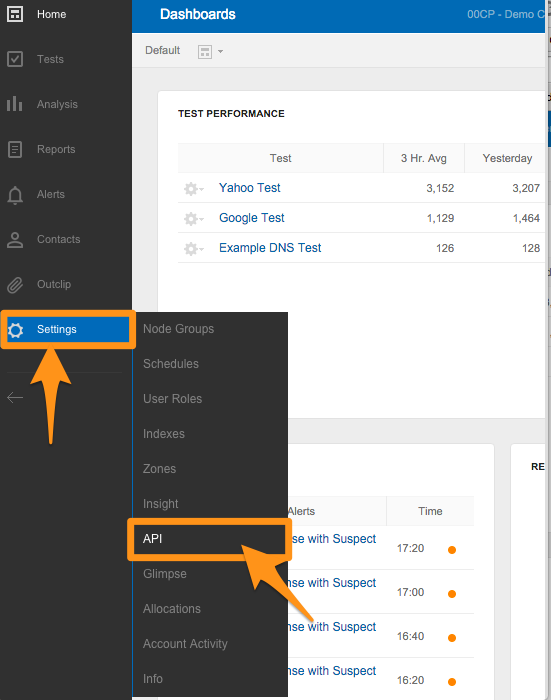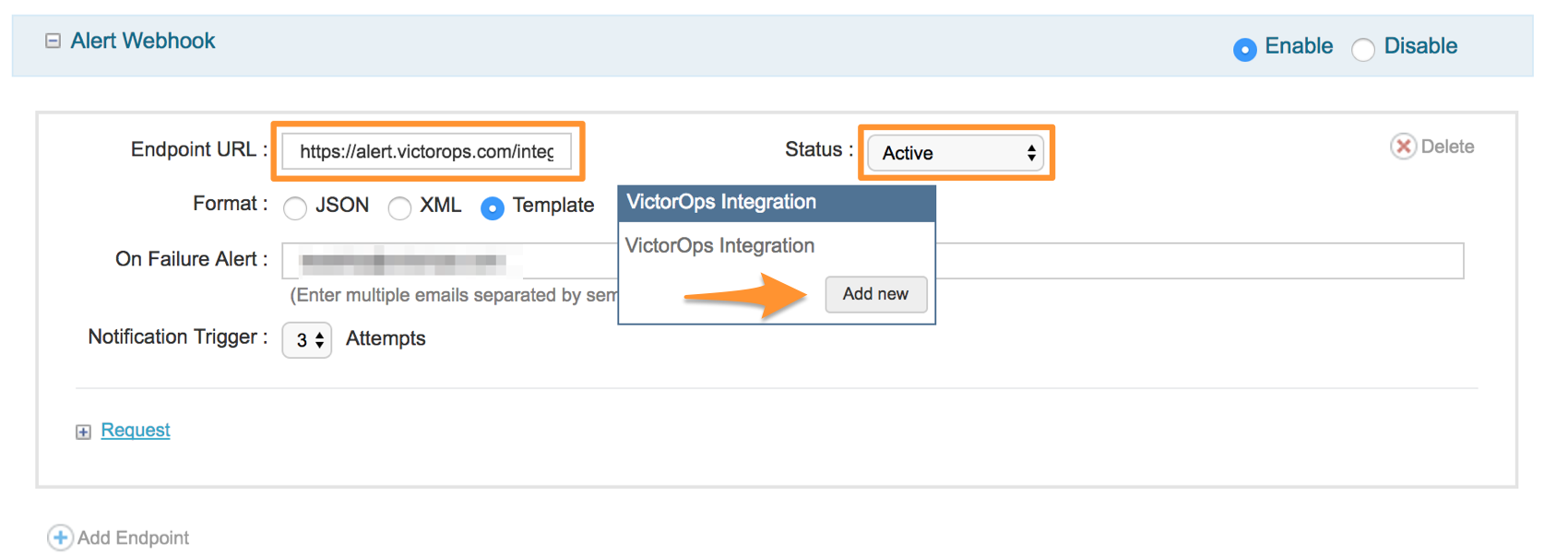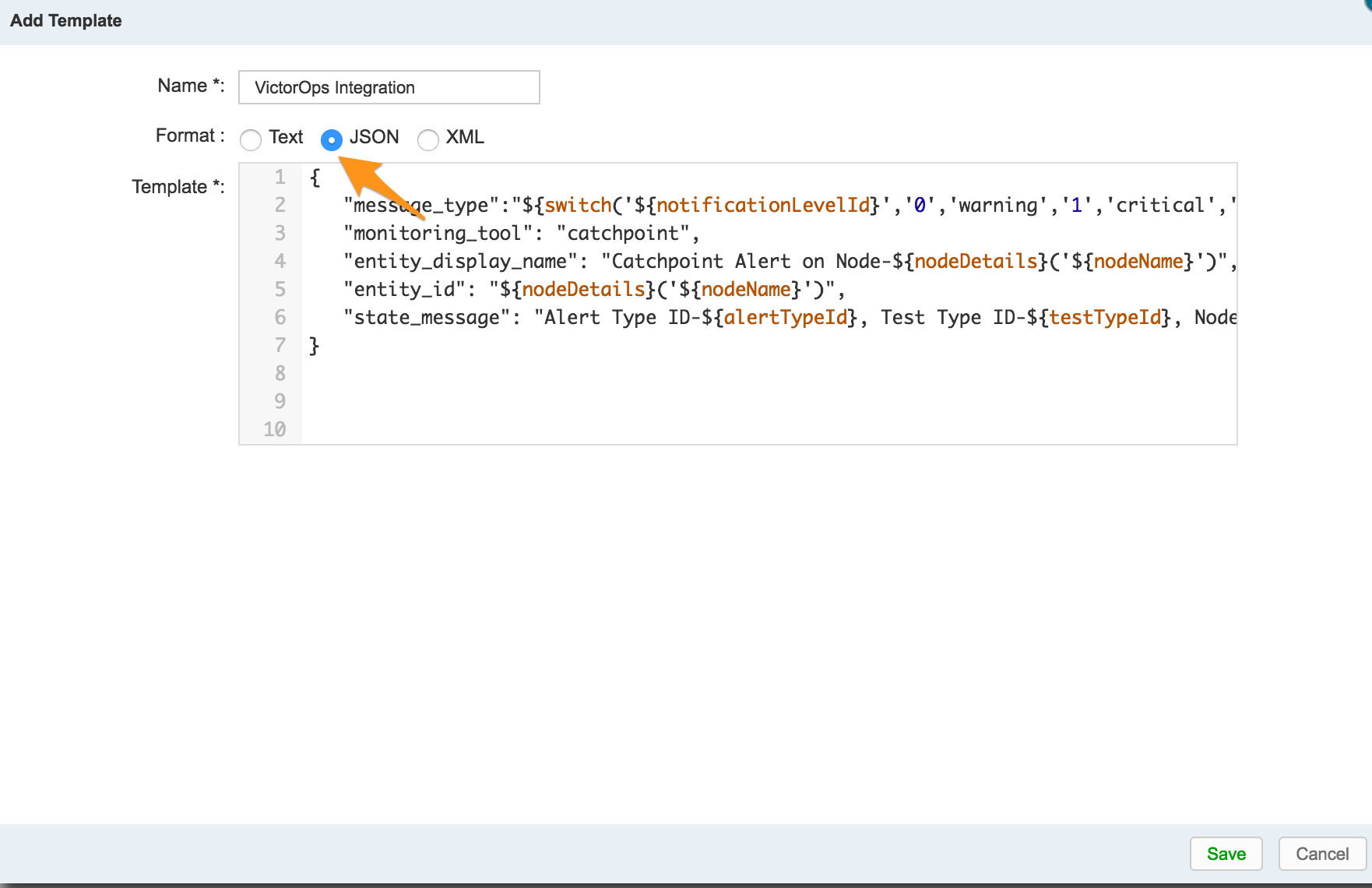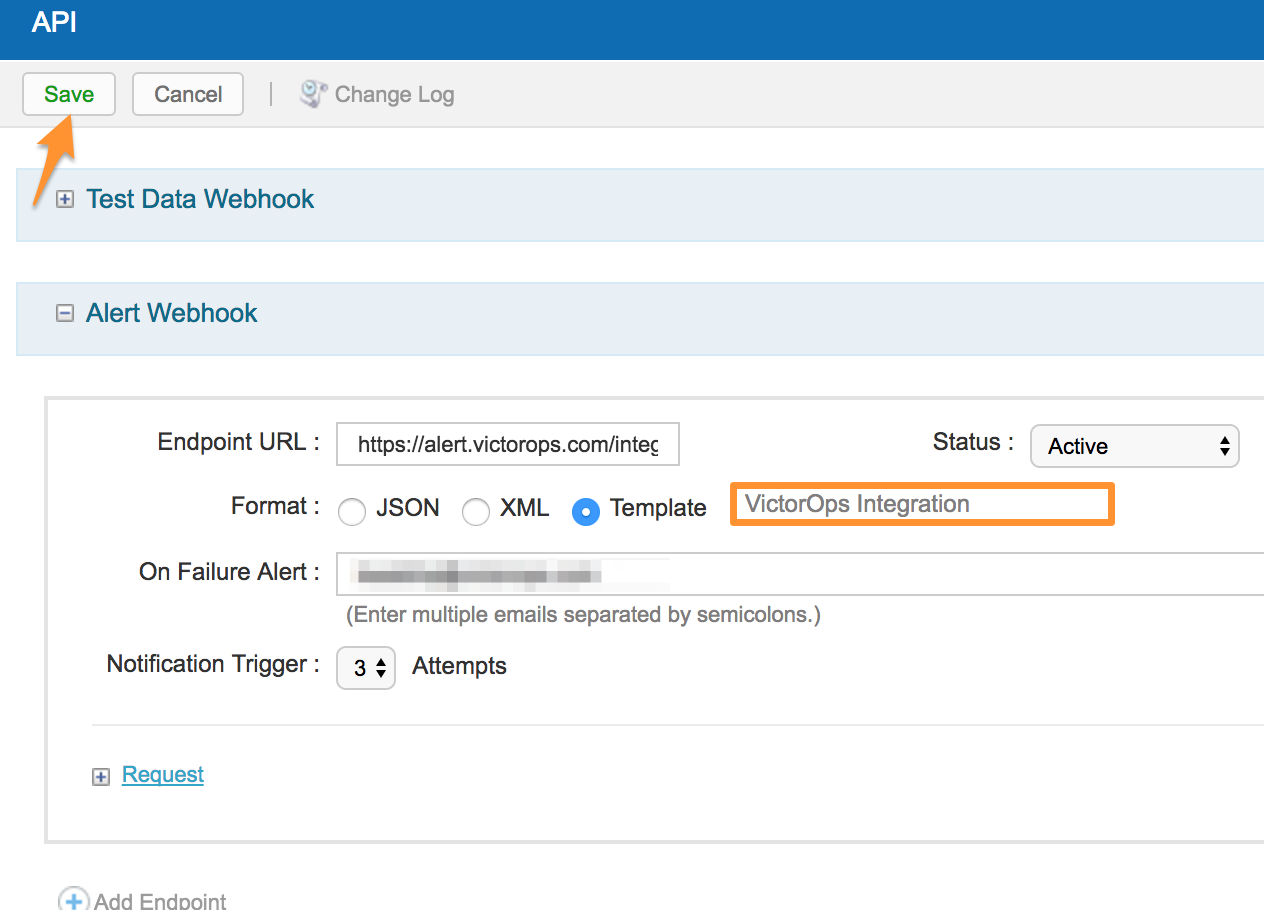Catchpoint integration for Splunk On-Call 🔗
Requirements 🔗
This integration is compatible with the following versions of Splunk On-Call:
Starter
Growth
Enterprise
Catchpoint delivers world-class Web Performance Monitoring for all internet services: Website, Mobile, App, Ads, API, DNS, CDN, Streaming, Cloud, & more.
The following walks you through the steps needed to integrate Catchpoint with Splunk On-Call.
In Splunk On-Call 🔗
In Splunk On-Call, select Integrations, then Catchpoint.
If the integration isn’t active, select the Enable Integration button to generate your endpoint URL. Replace the $routing_key section with the actual routing key
you intend to use. To view or configure routing keys in Splunk On-Call, select Settings, then Routing Keys.

In Catchpoint 🔗
Navigate to Settings, then API.

Under Alert Webhook set the status to Active, Paste in your “API URL” that you got in Splunk On-Call.
Select Template, then Add new.

Give it a name (“VictorOps Integration”, for example) and set the Format to
JSON.

Paste the following code in the Template section:
{
“message_type”:“:math:`{switch('`\ {notificationLevelId}','0','warning','1','critical','2','recovery','3','recovery')}”,
“monitoring_tool”: “Catchpoint”, “entity_display_name”: “Catchpoint
Alert for ${testName} on node :math:`{nodeDetails(`\ {nodeName})}”,
“entity_id”: “:math:`{testId}\_`\ {AlertInitialTriggerDateUtcEpoch}”,
“state_message”: “Alert Type
ID-:math:`{alertTypeId}, Test Type ID-`\ {testTypeId},
Node-:math:`{nodeDetails('`\ {nodeName}')}, Product-
:math:`{productId}, Test\_url-`\ {testUrl}” }
Select your newly created template, and select Save.

If you’re looking for additional variables to add to your payload, log into your Catchpoint account and seek out the Alert Webhook Macros. You can add as many variables as you want, but customizing the parameters of the existing Template might result in degraded functionality.